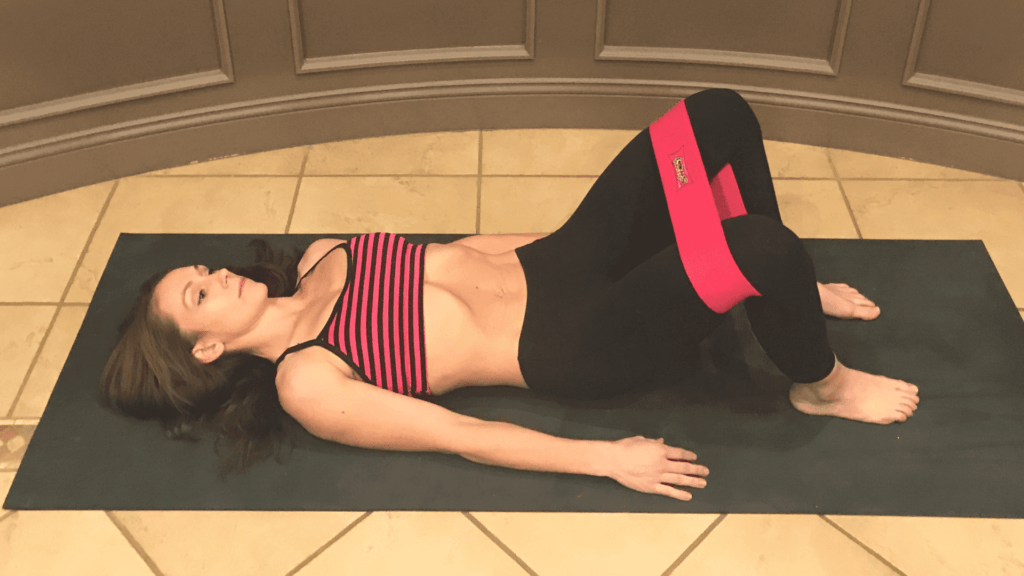Do you ever feel self-conscious about your protruding lower ribs?
You’re not alone. Many people struggle with flared ribs, which can affect posture and breathing.
Fortunately, there are effective techniques to help correct this issue.
This blog post will explore essential breathing exercises targeting the root causes of flared ribs.
You’ll learn to engage your diaphragm, strengthen your core, and improve your overall posture.
By implementing these simple yet powerful techniques into your daily routine, you can gradually minimize the appearance of flared ribs and enjoy the benefits of better breathing and alignment.
Let’s dive in and discover how you can transform your posture and boost your confidence, one breath at a time.
What Are Flared Ribs?
Flared ribs occur when the lower portion of the rib cage protrudes outward more than it should, resulting in a postural imbalance.
This condition is characterized by excessive outward flaring of the bottom ribs, which disrupts the torso’s natural alignment.
Individuals with flared ribs often exhibit a distinct appearance where their chest appears pushed forward while the lower ribs prominently stick out.
This postural distortion creates a noticeable misalignment in the upper body, drawing attention to the protruding rib cage.
Impacts of Flared Ribs

Flared ribs can significantly impact various aspects of an individual’s well-being. It can alter breathing patterns, causing shallow or inefficient breaths.
Additionally, it can lead to poor posture, placing undue strain on the back, shoulders, and neck.
Over time, these imbalances can contribute to discomfort, pain, and potential long-term musculoskeletal issues.
Causes of Flared Ribs
- Weak core muscles are a primary contributor to flared ribs. When the abdominal and oblique muscles lack strength and tone, they fail to provide adequate support to the rib cage, allowing it to flare outward.
- Poor posture habits, such as slouching or hunching over, can exacerbate the condition. Consistently maintaining improper posture can weaken the muscles responsible for aligning the ribs.
- Developmental issues or injuries during growth stages can also contribute to flared ribs. Imbalances or trauma to the musculoskeletal system during crucial growth periods can lead to structural changes.
Connection Between Breathing Techniques and Rib Alignment
Proper breathing techniques play a vital role in maintaining optimal rib cage alignment.
When an individual engages in correct breathing patterns, the diaphragm and core muscles synergize to support the ribs and promote a neutral posture.
Effective breathing involves the coordinated movement of the diaphragm, which descends during inhalation and ascends during exhalation.
This rhythmic motion helps to stabilize the rib cage and prevent excessive flaring.
The diaphragm, a large, dome-shaped muscle located at the base of the lungs, is the primary respiration muscle.
Its proper functioning is crucial for maintaining rib cage stability and alignment.
When the diaphragm contracts and descends during inhalation, it creates a vacuum, drawing air into the lungs.
Simultaneously, it massages the internal organs and gently lifts the rib cage, promoting proper positioning.
Benefits of Correcting Flared Ribs Through Proper Breathing
1. Improved Posture
By incorporating proper breathing techniques, individuals can experience a notable improvement in their overall posture.
As the diaphragm and core muscles engage correctly, they help to align the spine and rib cage, reducing the tendency for the ribs to flare outward.
Consistent diaphragmatic breathing practice can lead to a more upright and balanced posture, as the muscles responsible for maintaining alignment become stronger and more efficient.
2. Enhanced Physical Comfort
Proper breathing can correct flared ribs and significantly alleviate discomfort and strain in the back, shoulders, and neck regions.
When the rib cage is properly aligned, the surrounding muscles can function optimally, reducing unnecessary tension and strain.
Correcting flared ribs through breathing techniques may reduce pain, improve mobility, and increase one’s sense of ease in daily activities.
3. Better Respiratory Efficiency
Proper breathing techniques, particularly diaphragmatic breathing, enable individuals to take deeper, more efficient breaths.
By engaging the diaphragm fully, the lungs can expand to their maximum capacity, allowing optimal oxygen exchange.
Improved respiratory efficiency translates to better oxygenation of the body’s tissues, increased stamina, and enhanced overall respiratory health.
Correcting flared ribs through proper breathing can contribute to a more robust and well-functioning respiratory system.
Types of Breathing and Their Impact on Flared Ribs

Diaphragmatic (Abdominal) Breathing
Diaphragmatic breathing, also known as abdominal breathing, is a technique that focuses on engaging the diaphragm muscle to its fullest capacity.
It involves taking deep, controlled breaths from the belly rather than the chest.
By properly utilizing the diaphragm, individuals can achieve a more efficient exchange of oxygen and carbon dioxide.
Diaphragmatic breathing promotes a natural, relaxed rhythm and helps to maintain proper rib cage alignment.
Chest (Thoracic) Breathing
Chest or thoracic breathing is a shallow pattern that primarily relies on the chest muscles rather than the diaphragm.
It involves expanding the chest cavity by raising the shoulders and upper ribs during inhalation.
Chest breathing is often associated with a less efficient breathing pattern, as it engages only a portion of the lungs’ capacity.
It can contribute to poor rib positioning and may lead to increased tension in the neck, shoulders, and upper back.
Differences and Impacts on Rib Position
| Aspect | Diaphragmatic Breathing | Chest Breathing |
|---|---|---|
| Mechanism | The diaphragm contracts and descends, lifting and expanding lower ribs | Upper chest muscles pull ribs upward and forward |
| Rib Alignment | Maintains optimal rib position | This leads to exaggerated rib flare |
| Posture | Supports neutral posture | Reinforces poor posture |
| Muscle Involvement | Primarily uses diaphragm | Primarily uses upper chest muscles |
| Impact on the Musculoskeletal System | Promotes balance and reduces imbalances | It can create imbalances and exacerbate postural issues |
| Breathing Efficiency | Encourages deep, efficient breathing | This may result in shallow, inefficient breathing |
Techniques for Correcting Flared Ribs Through Breathing

Diaphragmatic breathing, also known as belly breathing, is a technique that focuses on engaging the diaphragm muscle to promote deeper, more efficient breathing.
Step 1: Lie down on your back with your knees bent and your feet flat on the floor. This position allows your body to relax and helps you focus on breathing.
Step 2: Place one hand on your chest and the other on your abdomen below your rib cage. This placement helps you monitor the movement of your chest and belly as you breathe.
Step 3: Inhale deeply through your nose, focusing on allowing your abdomen to rise as you fill your lungs with air. The hand on your belly should increase, while the hand on your chest should remain relatively still.
Step 4: Exhale slowly through your mouth, gently pressing down your abdomen to help expel the air. You should feel your abdomen falling back towards your spine as you exhale.
Step 5: Continue this breathing pattern for 5-10 minutes, taking slow, deep breaths and focusing on the sensation of your abdomen rising and falling. Aim to practice this technique at least once daily, gradually increasing the duration as you become more comfortable.
Conclusion
Flared ribs can be a source of discomfort and self-consciousness.
Still, you can work towards correcting this postural issue by incorporating proper breathing techniques and exercises into your daily routine.
Diaphragmatic breathing, rib mobility exercises, and mindful posture adjustments are key tools in your journey to better alignment and overall well-being.
Consistency and patience are essential, as changing long-standing habits takes time.
If you find this information helpful, we encourage you to explore our other posture, breathing, and body alignment resources.
Our goal is to empower you with the knowledge and techniques to take control of your physical health and feel confident in your skin.
Start implementing these strategies today and experience the transformative power of breath and movement.




